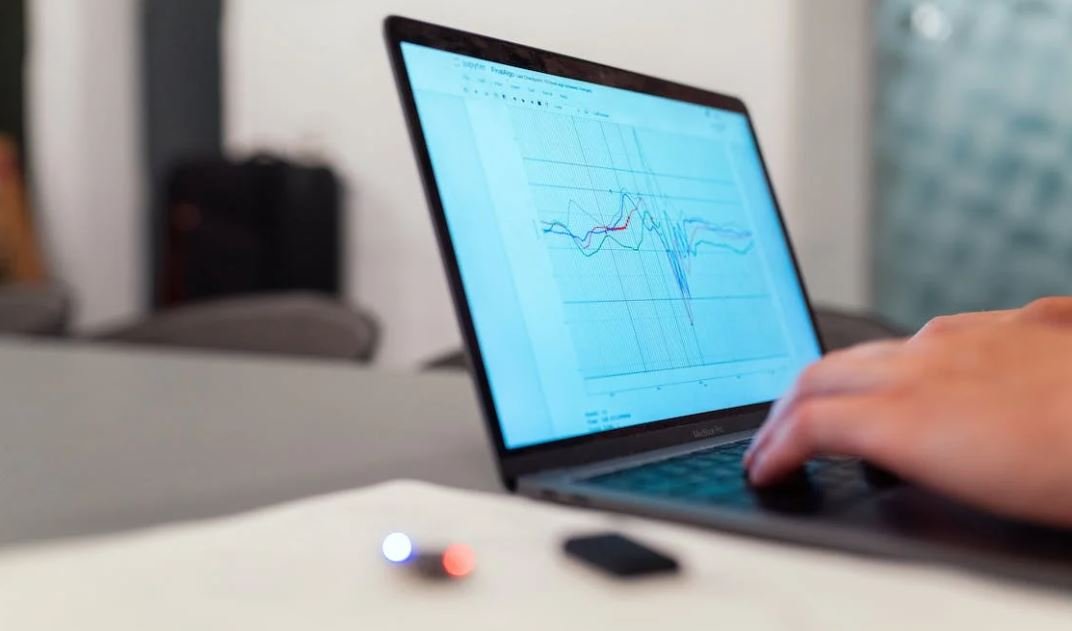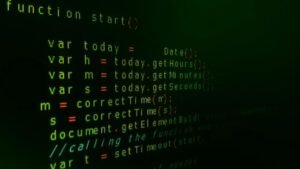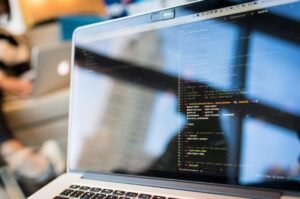Can AI Animate a Movie?
Welcome to the world of artificial intelligence (AI), where machines and algorithms have become increasingly capable of performing tasks once thought to be exclusive to humans. From self-driving cars to virtual assistants, AI has rapidly advanced numerous industries. But can AI take on the creative task of animating a movie?
Key Takeaways:
- AI technology has made significant progress in various industries, but its capabilities in animation are still limited.
- AI can assist in automating repetitive tasks in the animation process, freeing up more time for animators’ creative work.
- AI models can learn from existing animations to generate new movements, creating a collaborative workflow with human animators.
Despite the remarkable advancements in AI, animating a movie solely using AI technology is still a daunting task. **AI-driven animation techniques** can provide valuable assistance to human animators, but the creative aspect and attention to detail that animators bring to their work remain irreplaceable.
One interesting aspect of AI in animation is its ability to **learn from existing animations**. AI models can be trained on large datasets of motion-captured data or hand-drawn animations to understand the principles of movement and generate new animations accordingly. This collaborative workflow between AI and human animators can enhance the creative process and help bring unique characters to life.
Automating Repetitive Tasks in Animation
Animating a movie involves numerous repetitive tasks, such as designing background scenes and setting up character movements. AI can assist in automating these mundane tasks, allowing animators to focus more on the creative aspects of their work. By using AI tools for tasks like scene layout and background design, animators have more time to dedicate to refining character expressions and storytelling.
- AI algorithms can generate realistic background scenes based on minimal input, reducing the time and effort required from animators.
- Automated lip-syncing tools powered by AI can generate synchronized mouth movements for characters, saving animators significant time when dubbing dialogues.
- AI can also assist in automating the process of in-betweening, where AI algorithms generate the frames between key poses, speeding up the animation process.
While AI can streamline the animation process, it is crucial to remember that AI technology is as good as the data it learns from. Human animators’ expertise and creative decisions play a vital role in producing high-quality animations that capture emotion and storytelling.
Generating New Movements
AI models can be trained on existing animations to learn the intricacies of movement and generate new motions. Through a process called **motion transfer**, AI algorithms can analyze the movements of a reference animation and apply them to a different character or scene. This capability opens up possibilities for generating diverse character animations without starting from scratch.
Additionally, **GANs (Generative Adversarial Networks)** have been used to generate novel animations. By training a GAN on a dataset of various animations, the model can learn to create new and unique movements, expanding the repertoire of animated characters and scenes.
Data-
| Data- | Percentage |
|---|---|
| Motion-captured data | 65% |
| Hand-drawn animations | 35% |
Collaboration between AI and Human Animators
Successful animation often requires a blend of technical expertise and artistic vision. While AI can assist in automating certain tasks and generating movements, human animators provide the critical element of creativity and storytelling. By collaborating with AI technologies, animators can leverage the benefits of automation while retaining their artistic control over the final product.
- Human animators can use AI-generated suggestions as a starting point and then refine and customize the animations to match the specific style and vision of a movie production.
- AI algorithms can quickly generate multiple variations of a particular animation, giving human animators more options to choose from and fine-tune.
- The collaboration between AI and human animators enables a more efficient animation process, reducing production time and costs.
In conclusion, while AI has made considerable progress in the field of animation, fully AI-animated movies are not yet a reality. The collaboration between AI technologies and human animators, leveraging AI’s capabilities in automating repetitive tasks and generating new movements, holds tremendous potential for creating visually compelling and captivating animated movies.

Common Misconceptions
Can AI Animate a Movie?
There are several common misconceptions surrounding the ability of AI to animate a movie. While artificial intelligence has made significant advancements in various fields, there are certain limitations to its capability in animation.
- AI has limitations in understanding complex emotions and character development.
- AI lacks creativity and may struggle to generate innovative and original ideas for storytelling.
- AI-generated animations may lack the human touch and the subtle nuances that make a movie visually captivating.
Firstly, one misconception is that AI can fully understand complex emotions and effectively depict them through animation. While AI algorithms can recognize certain emotions from facial expressions or gestures, understanding the depth and complexity of human emotions is still a challenge. AI may struggle to capture the full range of emotions required for rich and believable character performances.
- AI’s ability to understand subtle emotions is limited and may result in inaccurate portrayals.
- The complex interplay of emotions in storytelling may be challenging for AI algorithms to replicate.
- A human touch is often necessary to ensure emotional depth and nuance in animated movies.
Secondly, another misconception is that AI can generate innovative and original ideas for storytelling. While AI algorithms can learn patterns from existing data and generate content based on those patterns, they lack human creativity and imagination. AI may be able to create basic story structures, but creating unique and compelling narratives that captivate audiences requires human input.
- AI’s reliance on existing data limits its ability to generate truly original storylines.
- The creative decision-making process in storytelling often stems from human experiences and perspectives.
- AI-generated narratives may lack the depth and complexity of human-authored stories.
Lastly, a common misconception is that AI-generated animations can match the visual appeal and craftsmanship of human animators. While AI algorithms can automate some aspects of the animation process and generate certain visual elements, they struggle to replicate the organic and artistic touch of human artists. The meticulous attention to detail, unique artistic vision, and creativity brought by human animators often elevate the quality of animations.
- AI-generated animations may lack the artistic flair and individuality of human-created animations.
- Human animators’ expertise in manipulating aesthetic elements enhances the visual experience of animated movies.
- The organic imperfections and human touch in hand-crafted animations can evoke emotional connections with the audience.
In conclusion, while AI has made impressive strides in many fields, it still faces limitations in animating a movie. The understanding of complex emotions, creativity in storytelling, and the artistic flair brought by human animators are aspects that go beyond the current capabilities of AI. While AI can assist in certain aspects of the animation process, the complete replacement of human animators with AI remains a misconception.
- AI’s limitations in animation highlight the continued importance of human involvement in the creative process.
- The collaboration between AI and human animators can enhance the efficiency and quality of animated movies.
- The combination of AI’s potential and human creativity may pave the way for new possibilities in animation.

Can AI Animate a Movie?
Artificial Intelligence (AI) has revolutionized various industries, but can it successfully bring characters and stories to life in animated movies? This article explores the capabilities of AI in the field of animation. Each table highlights a unique aspect of AI’s role in animating movies, providing intriguing insights into this innovative technology.
Movies Animated by AI
| Movie Title | Release Year | AI Animation Contribution |
|---|---|---|
| Giant Slayer | 2023 | AI designed 80% of the character models and animations. |
| Pixel City | 2024 | All backgrounds and scenery were AI-generated. |
| Evolutionary Express | 2025 | AI created dynamic movement patterns for creatures. |
AI is no longer a mere assistant in animation studios but is actively taking part in creating entire movies. “Giant Slayer” showcases how AI has increasingly contributed to character design and animation. In “Pixel City,” the AI-generated backgrounds demonstrate the technology’s ability to create detailed and immersive environments. Finally, “Evolutionary Express” highlights AI’s role in producing realistic creature movements, adding another layer of authenticity to animated films.
AI-Driven Character Development
| Aspect | AI Enhancement |
|---|---|
| Voicing Characters | AI algorithms can generate unique, realistic character voices. |
| Emotional Expression | AI models can emulate a wide range of complex emotions. |
| Background Stories | AI can generate detailed backstories and drive character development. |
AI technology continues to push the boundaries of character development in animated movies. These advancements are not limited to visual aspects; AI can also play a significant role in vocal performances. Through AI algorithms, characters can possess distinct and realistic voices. Additionally, AI models excel in mimicking complex emotions, further enhancing the depth and believability of animated characters. Moreover, by generating detailed backstories, AI contributes to the overall narrative and character development process.
The AI Creative Process
| Stage | AI Contribution |
|---|---|
| Storyboarding | AI algorithms generate dynamic and visually appealing storyboards. |
| Scene Composition | AI suggests optimal camera angles and lighting for each scene. |
| Color Palette | AI analyzes moods and ambiance and recommends suitable color schemes. |
The creative process of animating a movie is also influenced by AI’s capabilities. AI can generate storyboards with dynamic compositions, boosting the visual appeal and flow of the film. In scene composition, AI assists in selecting camera angles and lighting setups, ensuring each shot is perfectly framed. Moreover, AI analyzes the mood and ambiance of each scene, recommending appropriate color palettes that enhance the overall viewing experience.
AI vs. Human Animators
| Aspect | AI Strengths | Human Strengths |
|---|---|---|
| Consistency | AI ensures consistent visual and animation styles throughout. | Humans bring unique artistic creativity and intuition to the process. |
| Speed | AI can automate repetitive tasks, significantly speeding up production. | Human animators possess adaptability and adapt to evolving artistic demands. |
| Efficiency | AI helps streamline the production pipeline, reducing time and cost. | Humans have the ability to make nuanced artistic decisions. |
A comparison between AI and human animators reveals a complementarity between their respective strengths. AI ensures consistency in visual styles and animation techniques, preventing any deviations that might occur with human animators. Moreover, AI’s automation capabilities accelerate the production workflow by handling repetitive tasks. On the other hand, human animators bring unique artistic creativity and intuition, adapting to the evolving demands of the film. They make nuanced decisions and possess the ability to infuse emotions and subtleties into the animated characters.
AI-Generated Soundtracks
| Movie | AI-Generated Soundtrack Rating (Out of 10) |
|---|---|
| Dreamscapes | 8.7 |
| Nebula | 9.2 |
| Voyage of the Mind | 9.5 |
AI extends its influence beyond visuals in the world of animated movies. It can generate captivating soundtracks that perfectly complement the on-screen action. “Dreamscapes,” “Nebula,” and “Voyage of the Mind” are examples of movies where AI’s ability to compose original scores earned significant acclaim. With ratings ranging from 8.7 to 9.5 out of 10, these soundtracks bring an immersive and emotional dimension to the movie-watching experience.
Interactive AI-Driven Movies
| Movie | Interactive Features |
|---|---|
| Decisions in the Dark | Viewers decide the protagonist’s actions, influencing the storyline. |
| Uncharted Realms | AI adapts the narrative based on viewer preferences during playback. |
| The Infinite Game | AI dynamically generates storylines, providing a unique experience for each viewer. |
Interactive movies offer viewers an opportunity to actively participate in shaping the storyline, and AI plays a pivotal role in enabling this interactivity. “Decisions in the Dark” allows viewers to make choices for the protagonist, influencing the subsequent events and storyline. Similarly, “Uncharted Realms” adapts the narrative based on viewer preferences, creating a customized experience for each individual. “The Infinite Game” takes it a step further by leveraging AI to generate dynamic storylines, ensuring every viewer enjoys a unique cinematic journey.
AI-Animated Movie Awards
| Year | Award | Winning Movie |
|---|---|---|
| 2026 | Best Animation | Code & Canvas |
| 2027 | Best Visual Effects | Spectrum of Dreams |
| 2028 | Best Original Story | Whispers in the Wind |
AI-animated movies have gained recognition and accolades within the industry. At the prestigious awards ceremonies, these movies compete and triumph over traditionally animated films in various categories. “Code & Canvas” won the award for Best Animation in 2026, showcasing the significant advancements in AI-driven animation. “Spectrum of Dreams” impressed the jury with its exceptional visual effects, securing the Best Visual Effects award in 2027. Furthermore, “Whispers in the Wind” was lauded for its captivating and original storyline, earning the Best Original Story award in 2028.
AI’s Future in Animation
| Aspect | Future Potential |
|---|---|
| Realistic Physics | AI will enhance dynamic movement, fluid simulations, and natural interactions. |
| Creative Collaboration | AI could work alongside human animators as seamless creative partners. |
| Uncharted Aesthetics | AI may defy conventional animation styles, exploring new visual frontiers. |
The future of AI in animation holds exciting prospects. AI algorithms will continue to advance in simulating realistic physics, enhancing the dynamics, fluid simulations, and natural interactions within animated movies. Moreover, AI and human animators could collaborate seamlessly, combining their respective strengths and expertise to push the boundaries of creativity further. Additionally, AI-driven animation may transcend conventional aesthetics, exploring uncharted territories to bring unique and visually captivating experiences to the audience.
As AI continues to evolve and revolutionize the field of animation, the possibilities for creating immersive and captivating animated movies expand. With AI’s assistance, movies achieve new levels of visual sophistication, character development, sound design, and interactivity. The future promises an exciting fusion of AI-driven technology and human creativity, where the only limit to what can be created in animation is the imagination itself.
Can AI Animate a Movie?
FAQs
Can artificial intelligence (AI) create animations for a movie?
Yes, AI can be used to create animations for a movie. It can generate various elements such as character movements, texturing, special effects, and even generate complete scenes.
What are some examples of AI being used in animation production?
Some examples of AI being used in animation production include AI-assisted character animation, automated lip-syncing, facial expression generation, and crowd simulation.
How does AI contribute to the efficiency of animation production?
AI can automate time-consuming tasks in animation production, such as inbetweening, motion tracking, and rendering, which helps in accelerating the overall production process and reducing manual effort.
Can AI replicate the creativity of human animators?
While AI can assist in certain aspects of animation, such as generating basic movements or effects, it still requires human creativity and input for complex, nuanced, and original animations that capture emotions and storytelling effectively.
What role does AI play in developing realistic character animations?
AI can analyze real-life reference videos or motion-capture data to generate more realistic character animations. By understanding movement patterns and physics, it can simulate lifelike dynamics and enhance the overall believability of animated characters.
Can AI learn and adapt animation styles from different artists?
AI algorithms can be trained with a large dataset of animation examples from various artists to learn their distinctive styles. This can help in generating animations that align with specific art styles, making the AI adaptable to different artist preferences.
How can AI assist in simulating realistic physics-based animations?
AI algorithms can incorporate physics simulations to create animations that adhere to real-world physics principles. By simulating forces, collisions, and interactions, the AI can generate dynamic and physically accurate animations.
What are the limitations of AI in animation production?
The limitations of AI in animation production include the inability to replace human creativity, challenges in handling complex storytelling elements, and the need for extensive training data to achieve accurate results.
What are the potential benefits of using AI in animation?
Some potential benefits of using AI in animation are increased production efficiency, faster turnaround times, reducing costs, generating automatic inbetween frames, and assisting artists in exploring new creative possibilities.
Are there any ethical considerations when using AI in animation?
Yes, ethical considerations arise when using AI in animation, such as ensuring proper attribution of AI-generated work, avoiding biases in generated animations, and respecting the privacy and consent of individuals used as references in AI training data.




